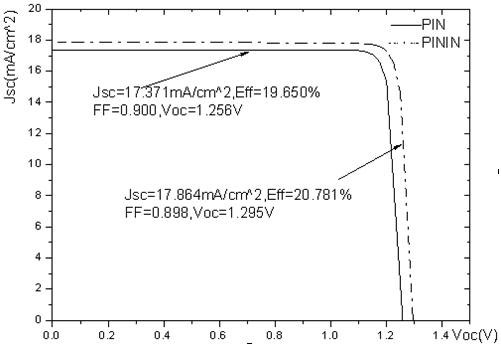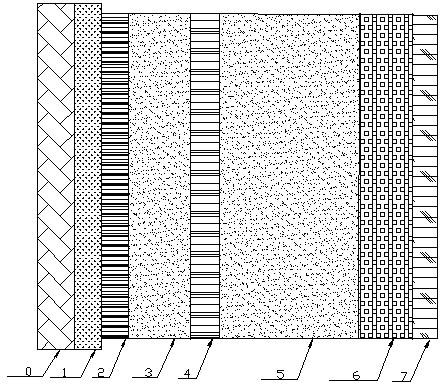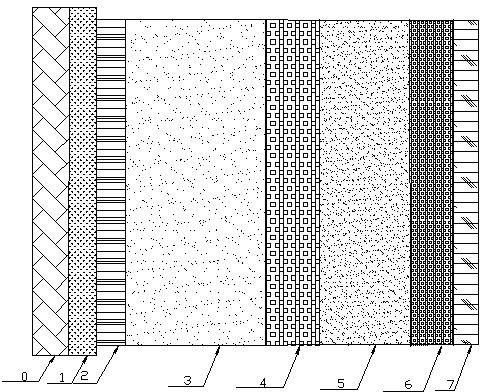Barrier type silicon-based thin film semi-laminated solar cell
A technology of silicon-based thin film and laminated sun, which is applied in circuits, photovoltaic power generation, electrical components, etc., can solve the problems of increasing spectral absorption, limiting performance stability, and complex manufacturing process
- Summary
- Abstract
- Description
- Claims
- Application Information
AI Technical Summary
Problems solved by technology
Method used
Image
Examples
Embodiment Construction
[0026] 1. Structural design of solar cells
[0027] Deposition of P on a transparent glass substrate 2 I 2 P 1 I 1 N 1 and P 1 I 1 N 1 I 2 N 2 Barrier type semi-stacked thin film solar cells with structure, where P 2 I 2 P 1 I 1 N 1 and P 1 I 1 N 1 I 2 N 2 The optical bandgap Eg of each layer in the P 2 I 2 P 1 I 1 N 1 structure, P 2 The doping concentration is taken as 3.0×10 19 cm -3 , Eg=1.96eV, I 2 Eg=1.8eV, P 1 The doping concentration is 3.0×10 17 cm -3 , Eg=1.96eV, I 1 Eg=1.7eV, N 1 The doping concentration is 3.0×10 19 cm -3 , Eg=1.6eV, at P 1 I 1 N 1 I 2 N 2 structure, P 1 The doping concentration is taken as 3.0×10 19 cm -3 , Eg=1.96eV, I 1 Eg=1.8eV, N 1 The doping concentration is 3.0×10 17 cm -3 , Eg=1.75eV, I 2 Eg=1.7eV, N 2 The doping concentration is 3.0×10 19 cm -3 , Eg=1.6eV, the band gap of each layer decreases in turn, which is conducive to the full absorption of the solar spectrum, thereby improving the ...
PUM
| Property | Measurement | Unit |
|---|---|---|
| Bandgap width | aaaaa | aaaaa |
| Thickness | aaaaa | aaaaa |
| Thickness range | aaaaa | aaaaa |
Abstract
Description
Claims
Application Information
 Login to View More
Login to View More - R&D
- Intellectual Property
- Life Sciences
- Materials
- Tech Scout
- Unparalleled Data Quality
- Higher Quality Content
- 60% Fewer Hallucinations
Browse by: Latest US Patents, China's latest patents, Technical Efficacy Thesaurus, Application Domain, Technology Topic, Popular Technical Reports.
© 2025 PatSnap. All rights reserved.Legal|Privacy policy|Modern Slavery Act Transparency Statement|Sitemap|About US| Contact US: help@patsnap.com



